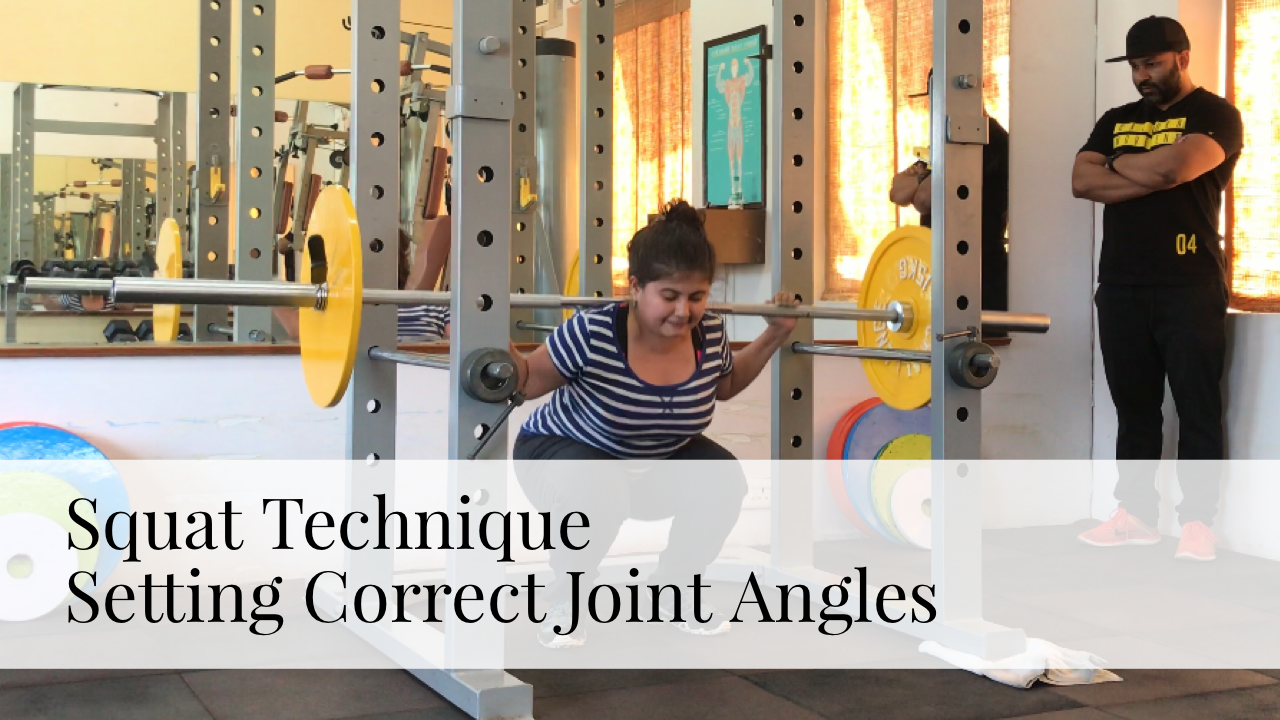Here’s a video of my trainee Neha squatting 110 lbs (50 kgs) x 5 Repetition Maximum with optimum technique. Neha didn’t have any experience with strength training before starting our Barbell Lifts program. However, her enthusiasm for gaining strength and her eagerness to learn and apply the scientific principles of strength training is already showing in her execution of all the lifts.
For the mechanics of the lifting technique to be efficient, the joint angles must adhere to the laws of physics such as gravitational force and moment arms. As a coach it was my responsibility to do a thorough analysis of Neha’s movement pattern and teach her to create joint angles as pertaining to her individual anthropometry. Dedicating a considerable amount of time to discuss these laws in the beginning of the program improves the confidence of the trainee to get under the bar and to execute the lift with authority.
The aim is to align the bones and the joints: wrists, shoulder girdle, elbows, spinal, pelvic, knees and ankles, for appropriate distribution of the load that the joint is capable of and to maintain a vertical bar path. Such application of efficient mechanics results in increased performance. In this case Neha’s 110 lb squat is a good example of improved performance.
If you are serious about your training time and effort, make sure you learn the scientific principles of strength training and the laws of physics that are applicable to your joints, or learn it from an experienced strength coach (who lifts). If you think I may be able to coach you, do let me know, I’ll be glad to guide you. Understanding your strength potential and using all the resources to achieve that potential will be truly rewarding. If you think this information will help somebody, please do share it. Thank you for reading.
